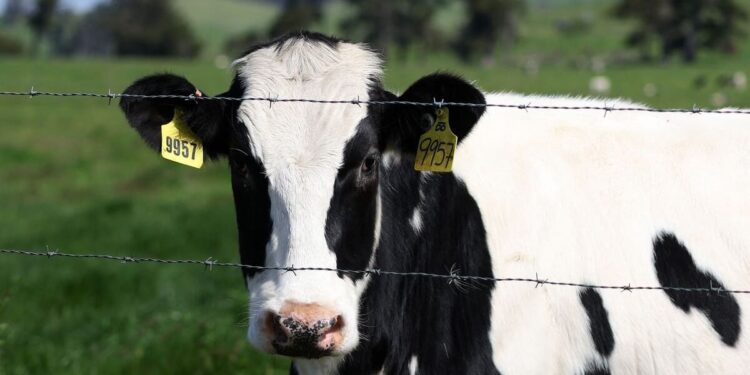A third person has been infected with avian flu in the United States in connection with an epidemic of this virus in cows, American health authorities announced Thursday, stressing that the risk for the American population remained “low”.
• Read also: Avian flu virus detected in alpacas in the United States
• Read also: Second person infected with bird flu via cows
• Read also: Avian flu: no risk for Canadian dairy products
As with the first two cases, this person works on a farm and was exposed to infected cows in this setting, the Centers for Disease Control and Prevention (CDC) said.
But while the first two patients had only presented mild symptoms in the eyes, this third person also reported “more typical” symptoms of a respiratory illness, including cough (without fever), they detailed.
This person was treated with an antiviral drug (oseltamivir), isolated at home, and “his symptoms are improving,” added the CDC, specifying that his relatives did not present symptoms.
Given the spread of the virus among many cow herds in at least nine U.S. states, the discovery of this new case is “not surprising,” as would the discovery of additional cases in the future, according to the CDC .
AFP
A first infection in Texas, in the southern United States, was announced on April 1. This was the first known worldwide case of avian flu in a human via a cow.
A second case was reported in Michigan (north) last week, with eye symptoms developed “after milk was thrown into the eyes,” according to Natasha Bagdasarian, state health official.
The third case is also in Michigan, but it involves an employee at a different operation. Neither employee wore protective equipment.
The priority today is to avoid further infections among farm workers as much as possible, the CDC wrote, stressing that it has asked American states to provide them with such equipment.
Experts are concerned about the growing number of mammals infected with the disease. They fear that high circulation could facilitate a mutation of the virus which would allow it to pass from one human to another.
“There is no indication of person-to-person transmission of the H5N1 influenza A virus at this time,” the CDC said.
No “unusual” signs regarding influenza in humans were also detected, for example an increase in emergency room visits, they added.
They said “additional genetic analyses” would be carried out to detect any possible changes to the virus that “could alter the risk assessment”.
Milk sold in stores has been declared safe thanks to pasteurization.



